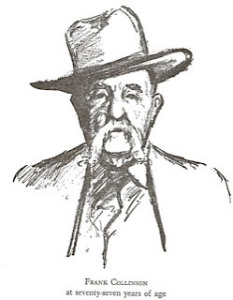An online dictionary defines anecdotal evidence as non-scientific observations or studies, which do not provide proof but might assist research efforts. Because it does not provide proof it is considered invalid. However, I argue there are times when anecdotal evidence is useful. This past week I had such an example.
I am continuing to do the research for the history of a cattle ranch in Jack County. The heirs have a considerable amount of papers, legal documents, family histories, and other valuable sources. But some of these are rather lacking in detail; such as why did this man enjoy wolf hunts and why were his hunting dogs so pampered? Why did someone trust him with thousands of dollars to buy small cattle herds before a drive to Kansas markets? What was a cattle drive really like?
As I mulled over these and other questions, I turned to my collection of ranch histories. And in those old books, some of which belonged to my grandparents, I found answers to many of my questions. Yet none were scientifically correct, just anecdotal evidence. I argue that these are the best answers that can be found.
One of the books I read was Life in the Saddle by Frank Collinson (University of Oklahoma Press, 1963). Collinson was a well-educated Englishman who fell in love with the lore of Texas as a boy. In 1872 as a young lad of seventeen, his parents gave his passage on a sailing ship to Galveston where he made his way to an uncle’s office in San Antonio. From then until his death in 1943, Collinson worked on cattle ranches, mined in the Big Bend, and wrote columns in Ranch Romances, an early pulp magazine for Wild West enthusiasts.
There are quite a few statements that pertained to the Jack County rancher. For example, Collinson gives a detailed description of cattle drives, of the trail boss who made the rounds of smaller spreads buying steers to drive to market and the need to rebrand all cattle on the drive with one brand. But cattle were also driven to the various reservations in Indian Territory for sale as well as to Federal Forts throughout the region.
Wolf hunts developed into sporting events by 1900. But the root of the sport was the necessity of eradicating those animals that were putting an end to the cow-calf operations by killing young calves and many cows. The rancher worked on the Rocking Chair Ranch about 1884 where there were more than a few wolf hunts. Collinson described the methods on that ranch as well as the special care given to hunting dogs. Later the rancher continued hunts on his ranch for sport.
I have encountered two surnames that are significant to the work I am doing. One is Greathouse and the other is either Airhart or Earhart. Neither is a common name but the Jack County ranch has pasture named Airhart/Earhart and the site of the ranch headquarters is called the Greathouse place. It should be noted that it is customary in that part of the country to call a pasture or a “place” after the original owner. I discovered that Jim Greathouse was a notorious gunslinger at Fort Griffin not far from Jack County as well as references to Earhart and Airhart. Voila, a hint to further research.

